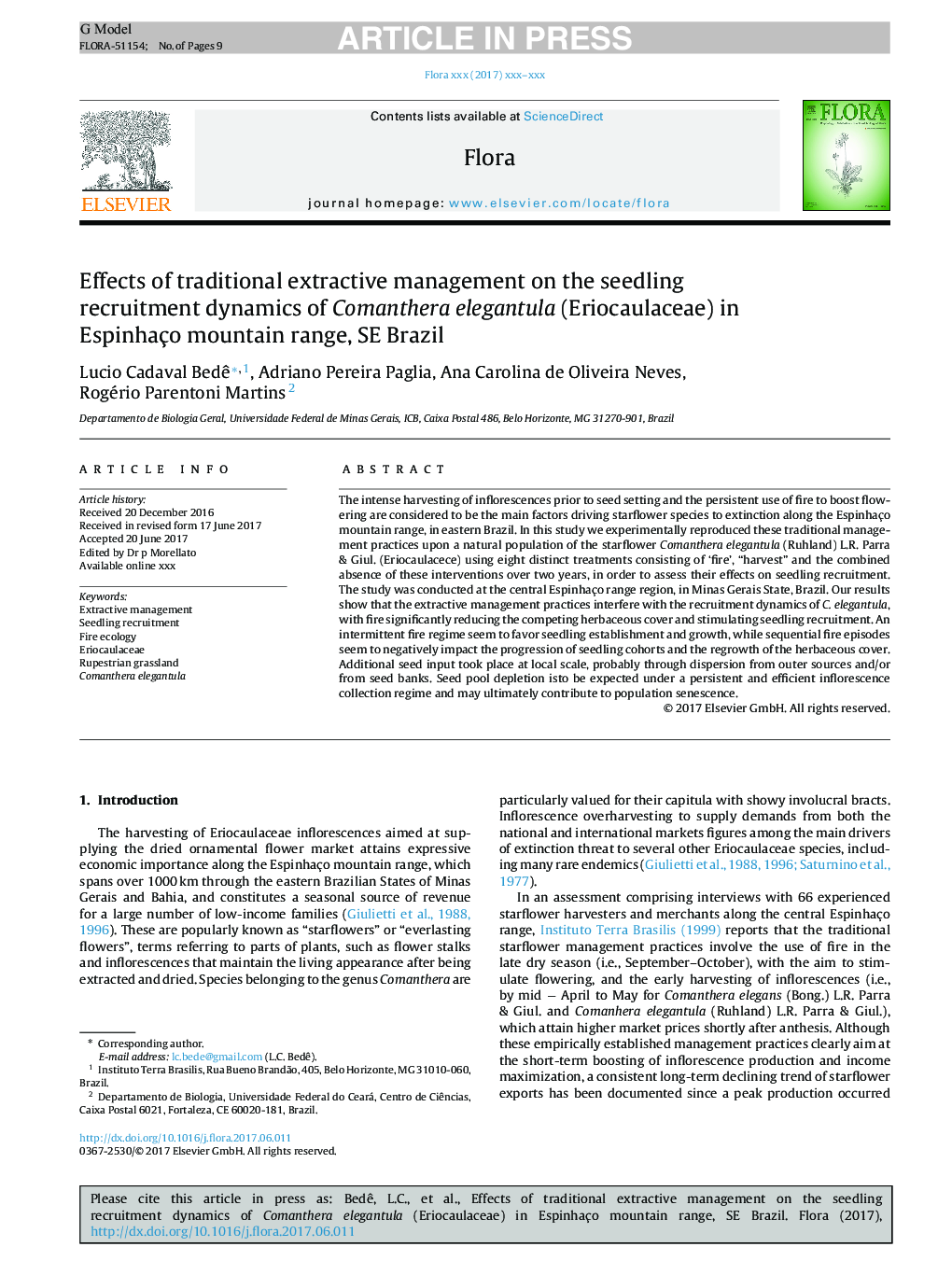| Article ID | Journal | Published Year | Pages | File Type |
|---|---|---|---|---|
| 8470240 | Flora - Morphology, Distribution, Functional Ecology of Plants | 2018 | 9 Pages |
Abstract
The intense harvesting of inflorescences prior to seed setting and the persistent use of fire to boost flowering are considered to be the main factors driving starflower species to extinction along the Espinhaço mountain range, in eastern Brazil. In this study we experimentally reproduced these traditional management practices upon a natural population of the starflower Comanthera elegantula (Ruhland) L.R. Parra & Giul. (Eriocaulacece) using eight distinct treatments consisting of 'fire', “harvest” and the combined absence of these interventions over two years, in order to assess their effects on seedling recruitment. The study was conducted at the central Espinhaço range region, in Minas Gerais State, Brazil. Our results show that the extractive management practices interfere with the recruitment dynamics of C. elegantula, with fire significantly reducing the competing herbaceous cover and stimulating seedling recruitment. An intermittent fire regime seem to favor seedling establishment and growth, while sequential fire episodes seem to negatively impact the progression of seedling cohorts and the regrowth of the herbaceous cover. Additional seed input took place at local scale, probably through dispersion from outer sources and/or from seed banks. Seed pool depletion isto be expected under a persistent and efficient inflorescence collection regime and may ultimately contribute to population senescence.
Related Topics
Life Sciences
Agricultural and Biological Sciences
Ecology, Evolution, Behavior and Systematics
Authors
Lucio Cadaval Bedê, Adriano Pereira Paglia, Ana Carolina de Oliveira Neves, Rogério Parentoni Martins,
